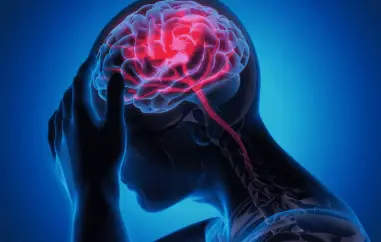Migraine: Unraveling the Mysteries Behind a Debilitating Condition
 Migraine, a neurological condition characterized by intense headaches often accompanied by nausea, vomiting, and sensitivity to light and sound, affects millions worldwide. Despite its prevalence and debilitating nature, migraine remains widely misunderstood, prompting ongoing research efforts to shed light on its causes, symptoms, and treatment options.
Migraine, a neurological condition characterized by intense headaches often accompanied by nausea, vomiting, and sensitivity to light and sound, affects millions worldwide. Despite its prevalence and debilitating nature, migraine remains widely misunderstood, prompting ongoing research efforts to shed light on its causes, symptoms, and treatment options.
Migraine is more than just a headache; it's a complex neurological disorder that can significantly impact an individual's quality of life. According to the World Health Organization (WHO), migraine ranks among the top 20 causes of disability globally, with an estimated one billion people affected worldwide.
The hallmark symptom of migraine is a severe headache, typically characterized by throbbing pain on one side of the head. However, migraine is a multifaceted condition that can manifest in various ways, often accompanied by visual disturbances, such as aura, as well as gastrointestinal symptoms and sensory sensitivities.
One of the greatest challenges in managing migraine is identifying its triggers. While triggers can vary widely from person to person, common factors include stress, hormonal fluctuations, certain foods and beverages, sleep disturbances, and environmental stimuli.
Understanding individual triggers is crucial for effective migraine management and prevention. Keeping a migraine diary to track symptoms and potential triggers can help individuals identify patterns and make informed lifestyle modifications to reduce the frequency and severity of attacks.
Treatment approaches for migraine encompass both acute management and preventive strategies. Over-the-counter and prescription medications, such as nonsteroidal anti-inflammatory drugs (NSAIDs), triptans, and anti-nausea medications, are commonly used to alleviate acute migraine symptoms.
In addition to pharmacological interventions, lifestyle modifications and complementary therapies, such as stress management techniques, dietary adjustments, regular exercise, and biofeedback, can play a pivotal role in migraine management. For individuals with frequent or severe migraine attacks, preventive medications may be prescribed to reduce the frequency and severity of episodes.
Recent years have witnessed significant advancements in migraine research, yielding valuable insights into the underlying mechanisms of the condition. Neuroimaging studies have provided compelling evidence of altered brain structure and function in individuals with migraine, shedding light on the neurological basis of the disorder.
Moreover, genetic studies have identified specific genetic variants associated with an increased risk of migraine, providing a deeper understanding of the genetic factors contributing to the condition. These findings hold promise for the development of targeted therapies tailored to individuals' genetic profiles, paving the way for personalized migraine treatment approaches.
Despite its widespread impact, migraine remains stigmatized and underrecognized as a significant public health issue. Misconceptions surrounding migraine can lead to social isolation, workplace discrimination, and inadequate access to healthcare services for affected individuals.
Raising awareness about migraine as a legitimate neurological condition is essential for reducing stigma and fostering greater understanding and empathy within communities. Moreover, advocating for increased research funding and healthcare resources dedicated to migraine is crucial for improving diagnosis, treatment, and support services for individuals living with the condition.
As we continue to unravel the complexities of migraine, empowering individuals with knowledge, support, and resources is paramount. By fostering multidisciplinary collaboration among researchers, healthcare providers, advocacy organizations, and affected individuals, we can advance our understanding of migraine and develop more effective strategies for prevention and management.
From harnessing the power of technology to track and analyze migraine patterns to advocating for policy changes that prioritize migraine research and healthcare access, there are myriad opportunities to drive progress and improve outcomes for those affected by this debilitating condition.
In conclusion, migraine remains a significant public health challenge, affecting millions worldwide and imposing a considerable burden on individuals, families, and society at large. By fostering greater awareness, understanding, and collaboration, we can work together to address the complexities of migraine and improve the lives of those affected by this often-misunderstood condition.















































